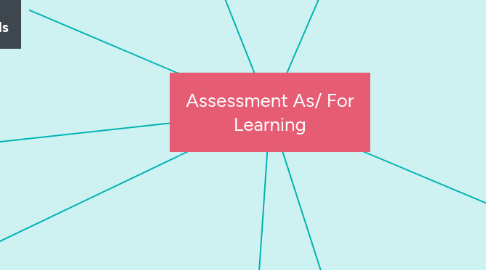
1. 2. Identifying Success Criteria
1.1. What successful attainment of learning goals looks like
1.2. Success criteria are used to develop assessment tools; rubric, checklist, etc...
1.3. Used in plain language students will understand
1.4. Involving students in the development of success criteria
2. 4. Providing Descriptive Feedback
2.1. Reduces gaps between student knowledge and achievement and learning goals and success criteria
2.2. Giving precise information about what they are doing well, needs work and the steps to improve
2.3. Feedback should be ongoing
3. 6. Developing Individual Goal- Setting Skills
3.1. Result of self-assessment skill development
3.2. Let students be responsible for their own learning and goals
3.3. Let students share responsibility for learning and scaffold on goal setting and assessment skills
4. 5. Developing Student Self-Assessment and Peer-Assessment Skills
4.1. Teacher feedback and success criteria help students to practice their own assessment skills
4.2. Provides students with autonomy and control over their education
4.3. Peer assessment helps students to learn from others and talk through their own work as well as improving ability to identify areas for improvement
5. Formative Assessment
5.1. Occurs during instruction with guidance from teacher and by modelling
5.2. Occurs in ongoing manner, while students are still learning and practicing the skill
6. 1. Developing Learning Goals
6.1. Students share a common understanding of what is being learned
6.2. Clearly explains the expectations for students in language they can easily understand
6.3. Based on learning expectations
6.4. Shared early on or at the beginning of learning
7. 3. Eliciting Information About Student Learning
7.1. Designing tasks that give students a change to showcase learning
7.2. Observing students as they perform tasks
7.3. Posing questions to prompt thinking
7.4. Encouraging conversations that will help students articulate thinking
8. Kindergarten
8.1. Eliciting Information About Children's Learning
8.1.1. Collecting evidence through conversation, observation and the demonstration of learning
8.2. Noting and Naming the Learning
8.2.1. Deepen and develop understanding of what learning looks like
8.2.2. Students participate in their own learning and their peers
8.3. Providing Descriptive Feedback
8.3.1. Help children to understand what they are learning and where to go from there
8.4. Developing Self-Assessment & Peer-Assessment Strategies
8.4.1. Helps students engage and take ownership of their learning
8.4.2. Can reflect on learning and monitor progress towards goals
8.5. Developing Individual Goal- Setting Skills
8.5.1. Children become independent learners
8.5.2. With support and practice from educators they understand goals and can be within their zone of proximal development
8.6. Developing Self-Regulation Skills
8.6.1. Able to devise and follow a plan
8.6.2. Able to manage time
8.6.3. Can establish individual goals
8.6.4. Awareness of strengths, needs and interests
